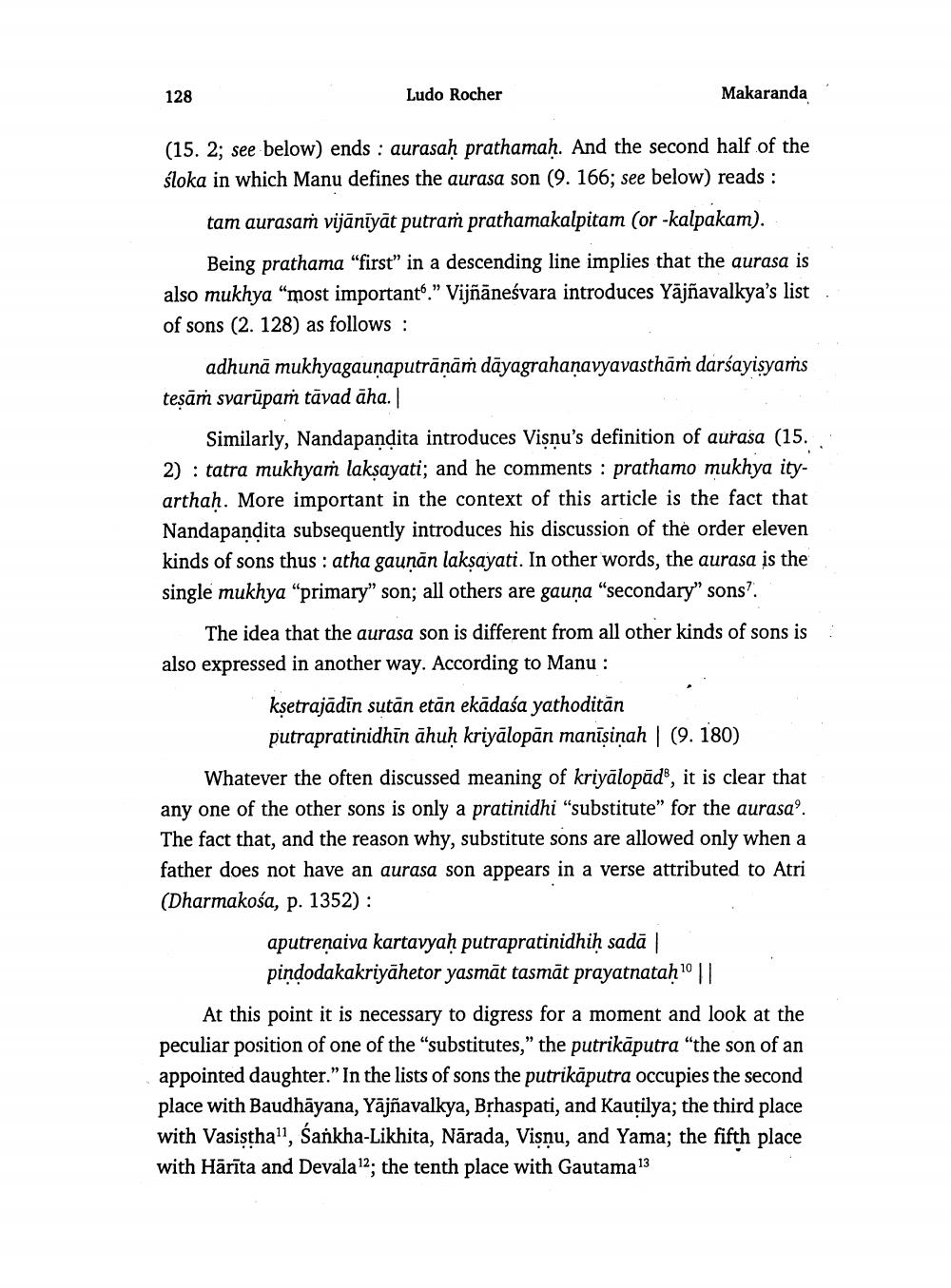________________
128
Ludo Rocher
Makaranda
(15. 2; see below) ends : aurasah prathamah. And the second half of the śloka in which Manu defines the aurasa son (9. 166; see below) reads :
tam aurasam vijānīyāt putram prathamakalpitam (or -kalpakam).
Being prathama "first" in a descending line implies that the aurasa is also mukhya "most important." Vijñāneśvara introduces Yājñavalkya's list of sons (2. 128) as follows :
adhuna mukhyagaunaputrānām dāyagrahanavyavastham darśayisyams teşāṁ svarūpam tāvad āha.
Similarly, Nandapandita introduces Vişnu's definition of aurasa (15. 2) : tatra mukhyam laksayati; and he comments : prathamo mukhya ityarthah. More important in the context of this article is the fact that Nandapandita subsequently introduces his discussion of the order eleven kinds of sons thus : atha gaunan laksayati. In other words, the aurasa is the single mukhya "primary" son; all others are gauņa “secondary" sons.
The idea that the aurasa son is different from all other kinds of sons is also expressed in another way. According to Manu :
ksetrajādīn sutan etān ekādaśa yathoditān
putrapratinidhīn āhuḥ kriyālopān manīşiņah | (9.180) Whatever the often discussed meaning of kriyalopāde, it is clear that any one of the other sons is only a pratinidhi “substitute” for the aurasa'. The fact that, and the reason why, substitute sons are allowed only when a father does not have an aurasa son appears in a verse attributed to Atri (Dharmakośa, p. 1352) :
aputreņaiva kartavyaḥ putrapratinidhiḥ sadā | pindodakakriyāhetor yasmāt tasmāt prayatnataho 11
At this point it is necessary to digress for a moment and look at the peculiar position of one of the "substitutes," the putrikāputra "the son of an appointed daughter." In the lists of sons the putrikāputra occupies the second place with Baudhāyana, Yājñavalkya, Bệhaspati, and Kautilya; the third place with Vasistha"), Sankha-Likhita, Nārada, Visnu, and Yama; the fifth place with Hārīta and Devala 12, the tenth place with Gautama 13




